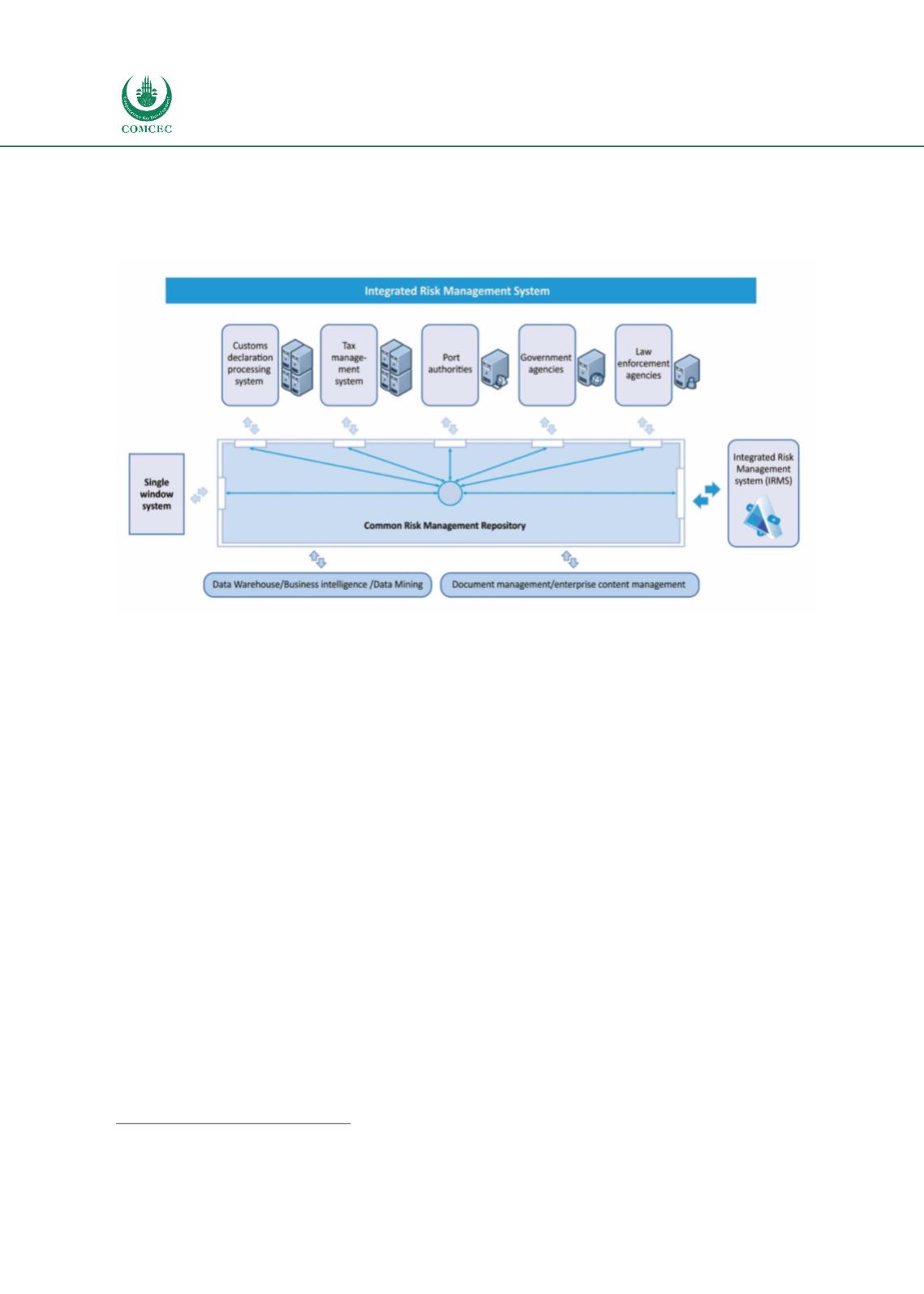

Facilitating Trade:
Improving Customs Risk Management Systems
In the OIC Member States
160
The ICRMS System can provide a common platform for an accurate and rapid exchange of
information (risk indicators), that consists of a CRM common data layer and a risk analysis
engine
(Figure 56).
Figure 56: Example of ICRM System Conceptual Model
Author’s compilation
As a concluding remark, the ICRM is addressing, in particular, the needs of OIC MS:
Define alternative risk level assessment rules to be applied on declarations and other
data as selection criteria; these rules derived with the help of advanced data mining
methods will be fine-tuned to detect very specific types of risk and accurate estimation
of their level thus making control even more efficient;
Pose very light IT requirements to national authorities, being a centrally located service,
“invisible” to end users service;
Apply a security layer based on “need to know access
86
”;
Employ a central repository of risk level assessment rules harmonizing the assessment
practices of the authorities that use it; moreover, this will make it easily adaptable to
assessment practices facilitating their adoption, when desired, by OIC MS.
Policy Option 5: Data integration for effective CRM
; Today, most customs ICT systems are
built on web technologies based on heterogeneous, distributed data architecture. Such systems
have client/server architecture to process the information requests. Distributed data
architecture is based on diverse hardware and technology, obsolete infrastructure and require
a lot of resources (human and technological) and does not allow the modernization and
implementation of innovative technologies that are necessary to support the CRM.
Fragmentation of data in the "traditional data silos"
(Figure 57)that make IT projects for
customs modernization hard and expensive to organize and manage. The traditional data -silos,
PC-centric and client-server architecture made IT projects difficult and expensive to deploy and
86
https://en.wikipedia.org/wiki/Need_to_know















